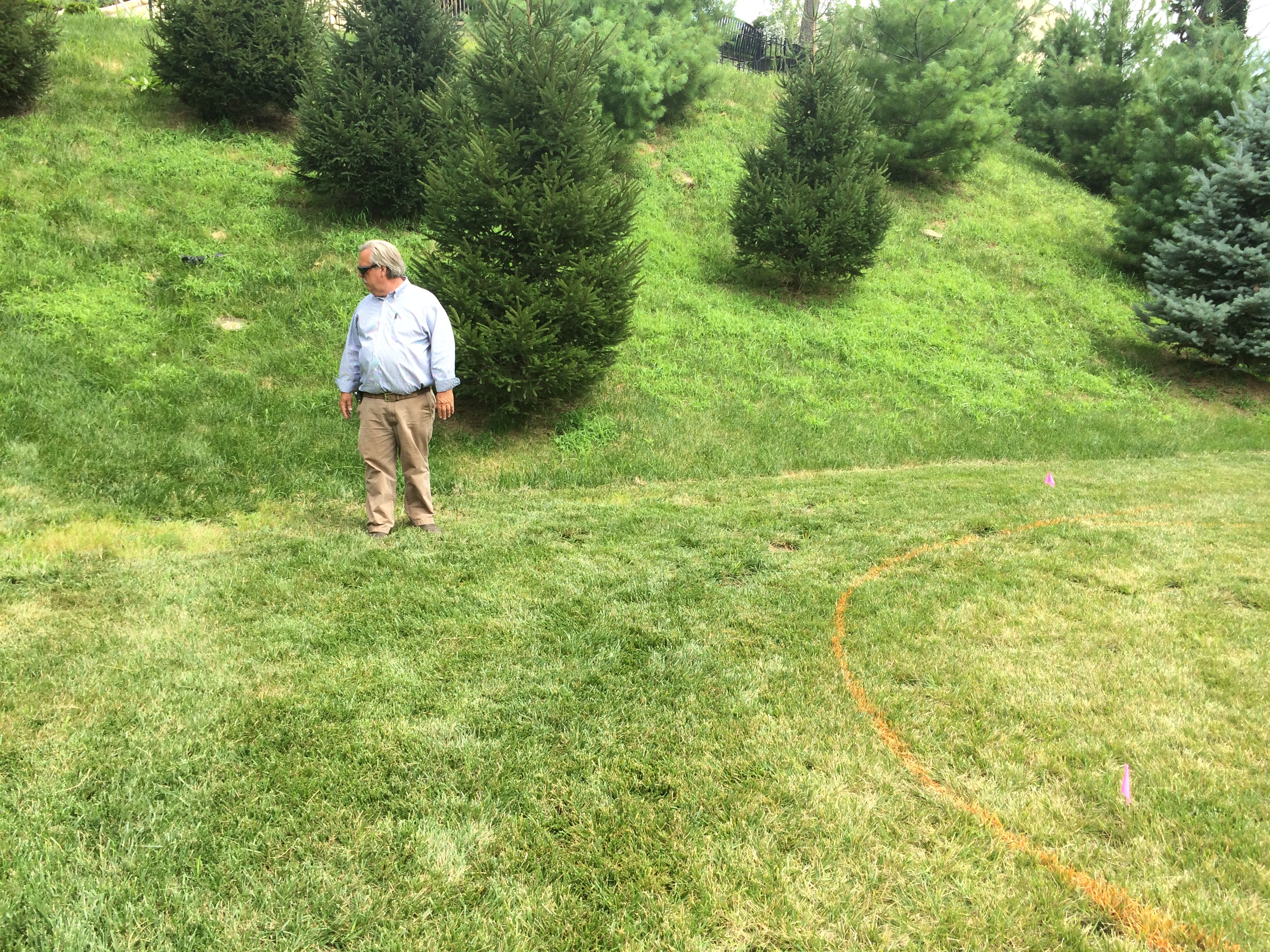Our modern perceptions of what a beautiful landscape looks like are not really our own ideas. They were in large part shaped by English landscape artists of the 18th and 19th centuries. Their highly romanticized works interpreted for the public what landscape designers were providing for the wealthy upper class. Their paintings, like the actual gardens being installed by premier designers, featured long, sweeping views of rolling lawns bathed in softly glowing light, groves of trees, water features and picturesque architectural pieces. Paths and beds had clean, precise edges and though there was a definite sense of openness, order and symmetry, there was also a subtle sense of mystery.
Artists like Thomas Moran, Albert Bierstadt, Thomas Cole, Frederic Church and others here in the United States, inspired by the European landscape vision, both followed and expanded the English lead. American artists brought to the public a pristine wilderness in which human beings and nature coexisted in perfect, peaceful harmony. Like the Europeans, they idealized the natural settings they painted, showing magnificent, but always orderly pastoral scenes. Over time, the ideality of organized, manicured settings became the standard for outdoor beauty, or what has been called the” cultural concept of naturalness.”
Unfortunately, the very nature of plant communities puts them at odds with the cultural concept of beautiful landscape design. Instead of remaining in crisply defined beds massed with blocks of carefully regulated colors, shapes and sizes, species in plant communities naturally mix and mingle, interacting with each other and with the environment. To many people, a plant community, either natural or designed, with its apparent randomness looks wild and neglected — as unkempt and as unloved as a long abandoned farmhouse on a back country road. Definitely not worthy of a respectable cityscape.
Understanding the benefits of plant communities to not only the individual but to the planet at large, innovative landscape professionals are finding ways to seamlessly integrate plant communities into their designs, making them attractive and acceptable elements of the design. Dan Nelson, lead designer at Embassy Landscape Group, described some of the techniques he uses to incorporate plant communities into both his residential and commercial work.
Dan says that he and his customer first discuss what the design goals for the project are. For example, will the planting be formal or informal? Will it be strictly ornamental or serve a functional purpose as well? What degree of tidiness is acceptable? As that framework is developed, then it becomes important to consider what type of plant community fits both the dreams of the customer and the characteristics of the site and its surroundings.
The relationship of plants to a place is a critical one. When the right plants are in the right place, then magic happens. The plants thrives because their needs (sun, soil, moisture etc.) are being met. Equally important, the right plants in the right place can work to reconnect people with nature; they can delight, engage, invigorate and renew the human spirit as they awaken a sense of place that sparks memories.
.
When the goals are determined and the size and type of community is decided upon, then how to best translate the natural setting into an accepted cultural concept within the landscape becomes the focus. Dan says that selecting a few key elements and emphasizing them in their natural patterns helps give the design its strength and keeps it understandable for the viewer. For example, a sweep of echinacea set in a wave of gently swaying grass brings to mind a wind-swept summer day on the prairie. Or, a grove of closely placed birch trees can become a peaceful patch of forest placed within the bustle of the city.
Another key to integrating plant communities into an understandable feature of the landscape is to create what is known as “orderly frames.” According to Joan Iverson Nassauer, professor and author of Messy Ecosystems, Orderly Frames, ecologically friendly landscapes are often perceived as “messy,” but acceptance for them can be gained by placing them “inside familiar, attractive packages..”
Strong, geometrically shaped beds can serve as an attractive package. They communicate an intentional planting and help viewers understand the context of what they are seeing. Framing beds with hardscapes such as walls, fences and pathways provide the sharply defined edges that have long been part of our perceptions of a beautiful landscape. Lawns and plants themselves can also be used as “familiar, attractive packaging.”
Finally, urban plantings are most effective when the majority of the plants are about 18 to 30 inches tall. Research by environmental psychologists has repeatedly shown that individuals like best and feel most comfortable with spaces that provide long views. Taller accent pieces can be added for dramatic structure, but even then taller, leafless stems that can allow sight lines are preferable.
Today’s world faces serious ecological issues. Climate change, increasing urbanization, modern agricultural practices, widespread use of chemicals — they all contribute to upsetting the balance of our ecosystems and to disconnecting us from the natural world. This revolution in planting — including plant communities in our built landscapes — can play a significant role in helping to heal our planet and to reconnect us to nature.










